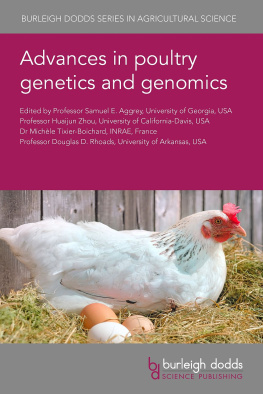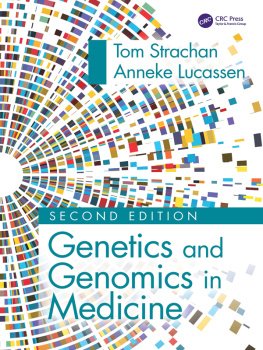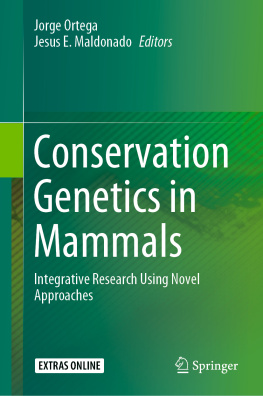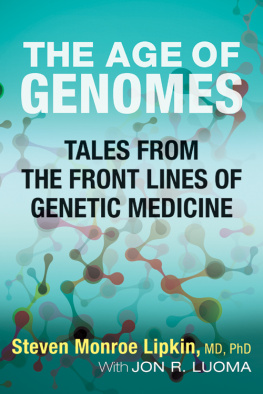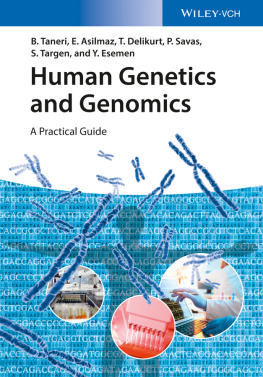Samuel E. Aggrey - Advances in poultry genetics and genomics
Here you can read online Samuel E. Aggrey - Advances in poultry genetics and genomics full text of the book (entire story) in english for free. Download pdf and epub, get meaning, cover and reviews about this ebook. publisher: Burleigh Dodds Science Publishing Limited, genre: Home and family. Description of the work, (preface) as well as reviews are available. Best literature library LitArk.com created for fans of good reading and offers a wide selection of genres:
Romance novel
Science fiction
Adventure
Detective
Science
History
Home and family
Prose
Art
Politics
Computer
Non-fiction
Religion
Business
Children
Humor
Choose a favorite category and find really read worthwhile books. Enjoy immersion in the world of imagination, feel the emotions of the characters or learn something new for yourself, make an fascinating discovery.
- Book:Advances in poultry genetics and genomics
- Author:
- Publisher:Burleigh Dodds Science Publishing Limited
- Genre:
- Rating:5 / 5
- Favourites:Add to favourites
- Your mark:
- 100
- 1
- 2
- 3
- 4
- 5
Advances in poultry genetics and genomics: summary, description and annotation
We offer to read an annotation, description, summary or preface (depends on what the author of the book "Advances in poultry genetics and genomics" wrote himself). If you haven't found the necessary information about the book — write in the comments, we will try to find it.
Advances in poultry genetics and genomics — read online for free the complete book (whole text) full work
Below is the text of the book, divided by pages. System saving the place of the last page read, allows you to conveniently read the book "Advances in poultry genetics and genomics" online for free, without having to search again every time where you left off. Put a bookmark, and you can go to the page where you finished reading at any time.
Font size:
Interval:
Bookmark:

Michle Tixier-Boichard, INRAE, France; and Steffen Weigend, Friedrich-Loeffler-Institut, Germany
Domestication is a complex and fascinating process that has triggered many studies and discussions, starting with mammals ( who pointed out the progress expected from new techniques in archeology and genetics.
1.1 How is domestication defined?
Domestication is a continuous process of interaction between humans and the target animal or plant species that has had enormous cultural and biological impacts on our species ().
The neural crest theory has been proposed to explain the biological mechanisms involved in domestication ().
From a legal viewpoint, the definition of a domestic species was proposed in the French Law for biodiversity (Law n 2016-1087 du 8 aot 2016) as follows: Any species which evolution process has been influenced by humans to meet their needs. This law also gives a definition of a wild relative as Any animal species which can sexually reproduce with domestic ones.
1.2 How is domestication studied?
For centuries, studies on domestication were based upon radio-dating and morphological description of ancient remains of mammals, mainly bones. Studies on ancient bones of domestic birds are less numerous than those of mammals, probably because bone remains are smaller or less well-conserved. Molecular studies of ancient tissues remain a challenge, because of the chemical modifications induced by aging of the sample, and because of the sensitivity of these studies to the contamination with DNA from modern samples. However, these studies are necessary to disentangle ancient genetic changes from those which took place in the middle-ages, for instance, as was shown for the gene encoding the thyroid-stimulating hormone receptor (TSHR) in chickens ().
The first molecular tool used to study domestication is the genotyping or sequencing of mitochondrial DNA (mtDNA), and particularly its hypervariable region. The mtDNA is maternally transmitted and does not undergo recombination, so that the ancient migratory or introgression events can be revealed quite easily from the maternal side, but this does not tell the whole story.
The rise of genomics has significantly extended this approach, although not replacing it, by providing insight into population history through reading the whole genome. Sequencing the genome of different populations can reveal the introgression events across populations as well as the significant changes in allele frequencies within a population, suggesting an effect of past selection.
1.3 How does domestication take place: when, where and why?
As explained by Cluttonbrock (). Yet, many historical records mention first cultural uses (entertainment such as cock-fighting) and religious motivations for several bird species; indeed, cock-fighting is still a common practice in some countries.
After humans observed the benefits they could obtain from domestic animals, they continued to maintain their influence on domesticated animals with more and more sophisticated technologies as time goes, as seen, for example, with the method of genomic selection currently used. Indeed, domestication is a continuous process. An important parameter to consider is the size of the population of animals, which has been engaged into domestication. As in any evolution or selection process, a small size of the initial population will reduce the initial gene pool and will limit the diversity of the population obtained. So, domesticated populations are generally expected to exhibit less genetic variability than their wild ancestors. This impact could be less severe if domestication took place in several sites for a given species.
The concept of domestication centre (DC) is important to understand further development of the domestic species. First, domesticated animals are expected to migrate with humans, and become more and more distant to the DC where domestication may still take place if the wild ancestors continue to evolve in its natural habitat. In that case, the wild ancestors co-exist with domestic animals, and gene flow may have continued between wild and domestic animals of a same species. This contributes to the maintenance of genetic diversity in the domestic population, as could be suggested for chickens ().
Further differentiation of domestic birds has taken place as a result of new mutations, drift and adaptation to local conditions. In particular, plumage color mutations and morphological mutations have been accumulating, following domestication of all bird species studied until now. Two possible scenarios of differentiation can be found:
1 maintenance of a large and highly variable population, without any defined phenotypic standard, as can still be observed in village chickens of Africa, where farmers are interested to maintain a phenotypic diversity among scavenging chickens. In that case, only a large geographic distance can lead to the genetic differentiation of populations;
2 breeding according to a breed standard, when farmers and hobby breeders define a preferred morphology of the animals, in order to distinguish them from those of other areas, or other farmers; reproduction between breeds is avoided, thus creating a genetic isolation, similar to the geographic isolation at the origin of speciation. This process of breed standardization has taken place in Europe and China for chickens, since centuries. Diversity patterns of these breeds are then mainly influenced by initial size of the founder population and the management practices applied by breeders, that is, the degree of inbreeding within breeds and the degree of crossbreeding between breeds.
Subsequent to breed standardization, specialized lines have been developed for a high growth rate or egg production, by applying breeding goals and modern methods of selection relying on the quantitative genetics theory. These different steps are represented in , which shows both migration and genetic trends in domestic chickens from the DC. New breeds or lines can still be created by crossing the existing breeds or by biotechnology, with transgenesis or, more recently, genome editing. Whereas transgenesis remained in the laboratories and did not impact genetic diversity of poultry, the expectations from gene editing could have a much stronger impact.

Figure 1 A schematic representation of the migration from the domestication center, followed by differentiation in breeds and commercial lines. Note that not all initial domesticated populations give rise to standard breeds, and not all standard breeds give rise to commercial lines. Each further step represents a sampling of initial genetic diversity present in the domestication center.
This general scheme holds for all species of domesticated birds, which were domesticated on almost all continents and at different time periods, as will be shown in this chapter. From a phylogenetic viewpoint, the domestic birds are found across a large range of species belonging to quite different orders: Galliforms, Colombiforms, Anseriformes and Ratites. For most domestic birds, the wild ancestor species is still present in its natural habitat, which makes possible random admixture events and raises interesting research questions. Overall, this situation is a great opportunity for the preservation of gene pool of the species, although it may represent a danger for the dissemination of diseases. At least, the natural habitat of the wild species should be preserved for the sake of biodiversity.
2.1 Taxonomy
The genus
Font size:
Interval:
Bookmark:
Similar books «Advances in poultry genetics and genomics»
Look at similar books to Advances in poultry genetics and genomics. We have selected literature similar in name and meaning in the hope of providing readers with more options to find new, interesting, not yet read works.
Discussion, reviews of the book Advances in poultry genetics and genomics and just readers' own opinions. Leave your comments, write what you think about the work, its meaning or the main characters. Specify what exactly you liked and what you didn't like, and why you think so.

